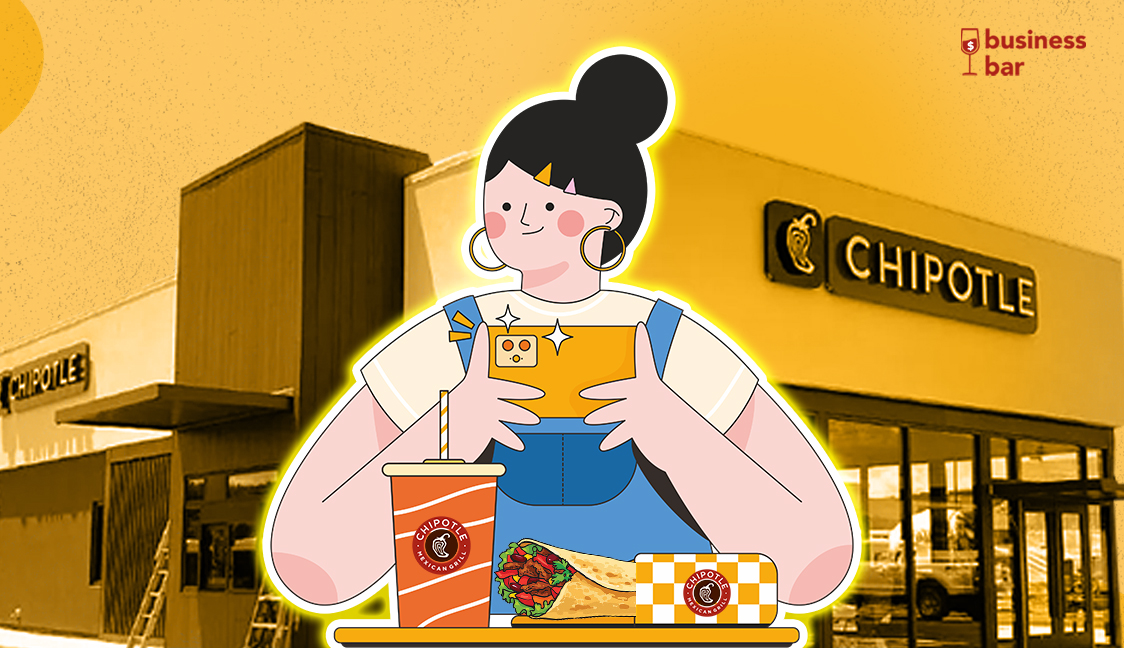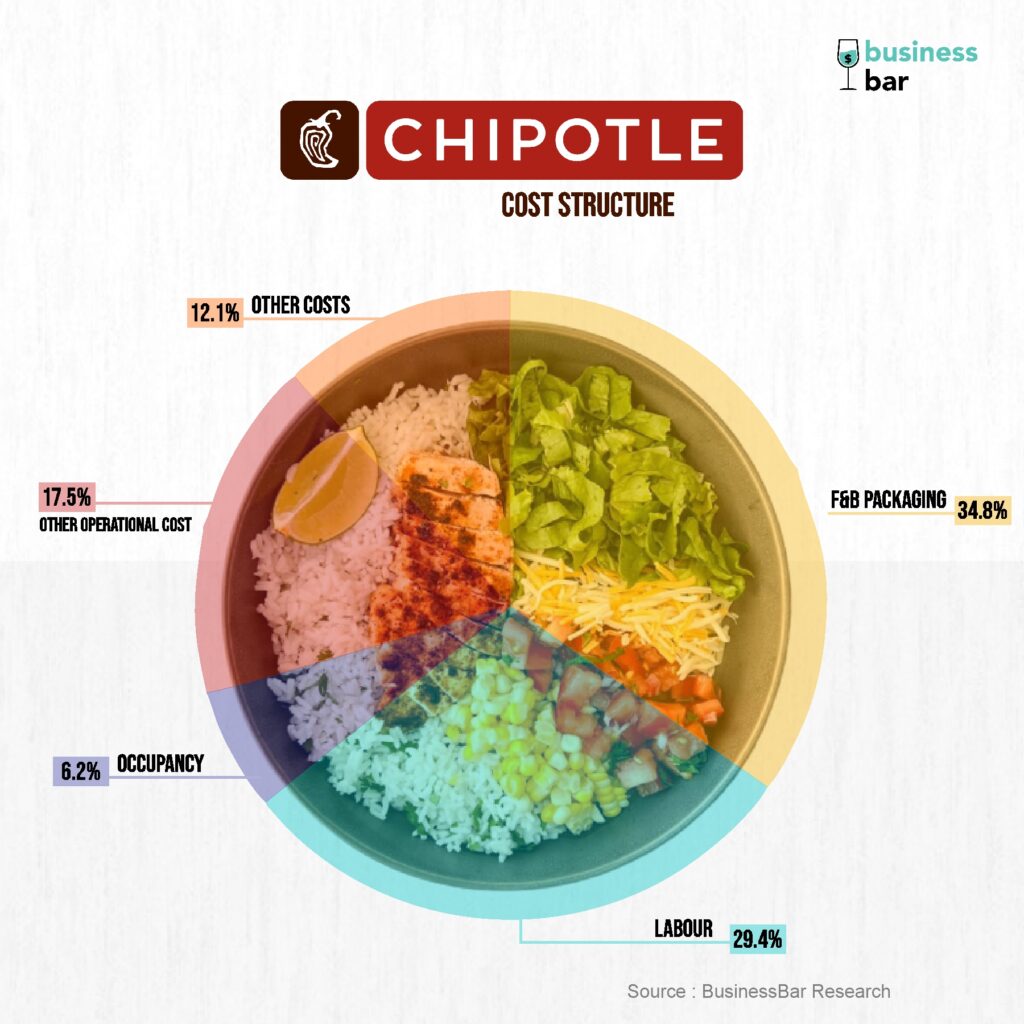
30 years, exactly three decades ago one of the Top 5 global fast food casual dining restaurants was born. Its secret sauce (pun intended) unlike the rest, was not coffee, burgers or pizza. In the last 5 years, its share price has more than quadrupled and just last year it grew by an astounding 14% into a much larger giant with top line revenues of $8.6 billion. Burritos, chips and salsa make up every single dollar that pours into the business!
Chipotle, as we fondly know, recognize and relish is derived from the Mexican name for smoked and dried jalapeno chili peppers. It was started by a young sous chef Steve Ells in 1993. While Steve dreamt of opening a chic French restaurant in his hometown Boulder, he wholeheartedly believed that Burrito had immense potential to be the ultimate go-to, slightly healthier version of fast food. In other words, its business model was based on the belief that – “Customers want fresh-food fast!”
With a $85,000 loan from his father, Steve launched his first 850 square foot burrito joint, near the University of Denver campus. Back then, Steve calculated that they’d have to sell 107 burritos everyday to earn a profit. Within a month’s time they were selling 1000 burritos daily, far beyond their expectations! 1.5 years later, Chipotle opened its second store. Eventually a third, a fourth and as of last year, it boasts of 3187 stores around the world, ~98% of them still within the U.S.A.
Steve lays down the foundational philosophy of Chipotle in the 2005 annual report.
“I wanted to show that food that was served fast did not have to be a typical fast-food experience. I built the first Chipotle around this vision, and served food that I liked—food that was made to order, using only fresh ingredients and served in an environment that was sympathetic to the food”
By 1998, Chipotle had expanded to 14 stores and some say that the next phase of Chipotle’s supercharged growth was only possible, because the golden arches decided to beam down upon it, in all its full glory. McDonald Corp was one of the earliest investors and pumped in close to $50 million in 1998. Between 1998-2005, it continued to inject up to a total $360 million, allowing Chipotle to rapidly proliferate to over 500 locations. By 2005, when Chipotle had begun to see revenues close to $628 million, McDonald’s was the largest investor with ~87% stake in the company.
In January 2006, Chipotle went public, at a price of $22 per share and closed its first day of trading at $44, i.e., 100% higher. But the very same year, McDonald divested its stake in Chipotle. The reason quoted at the time was that McDonald wanted to put 100% of their focus into growing their brand exclusively. Some reports claim that despite the early exit, McDonald reaped close to $1.5 billion, almost 4x return on its investment.
In a lot of ways, 2006 was the second inflection point for Chipotle. Since then, the domino effect continues to play, despite scare caused due to food safety crisis incidents. Infact, during the first wave of the pandemic, Chipotle grew its topline by 1.2x. While other businesses struggled to get their bearings, Chipotle was able to adapt, leap and scale in the new VUCA world fairly quickly. During a time when we were bored, anxious and lonely, this burrito business gallantly operated as its best. This begs the question – what is the reason behind Chipotle’s roaring success?

On a side note – I’m sure that a lot of you will agree that rolling a perfect burrito, with the right spread of beans, rice, veggies, cheese and avocado requires a special skill set. My rolling skills are appalling, but my research skills definitely aren’t!
So here are the top three reasons behind Chipotle’s success –
Few fresh ingredients, but thousands of possibilities
Quality & customization above everything else! Chipotle positions itself as a brand that promotes simple food with integrity. Due to their focus on high quality fresh ingredients, they are able to price their menu items higher than other fast food chains and attract young millennial and Gen Z customers. For example, an average Quarter Pounder with Cheese McDonald Meal is priced at $5.7, while a Chipotle chicken burrito bowl is ~$9.
Speaking of ingredients – Chipotle has 53 ingredients to be exact. They are mostly split into 5 types of proteins, 2 types of rice and beans each, 9 toppings, 2 sides and the rest are cheese, flour, oil and spices. Each one of them could be in the form of a burrito, burrito bowl, salad, taco or quesadillas. Or the newest one – a lifestyle bowl! Why do we care? Because even with this limited set of base ingredients, Chipotle boasts of a menu with more than 65,000 tasty food combinations.
A classic example of putting the customer at the canter – in a way, the customer is spoilt for options! How does this benefit Chipotle? With a limited number of base ingredients, Chipotle has been able to optimize for quality of fresh ingredients, quicker food checkout, consistent menu and increased profit margins by striking up better bargains with suppliers.
Smart restaurant workflows & digitally enabled operation
Every Chipotle restaurant is designed with efficiency and transparency in mind. The assembly line type of serving food allows for the customer to customize the order as they navigate down the queue, while maintaining direct lines of sight into the kitchen. All in all, creates a fast and transparent food check-out process.
Chipotle launched its first mobile experience as early as 2009, allowing customers to order ahead of time. In 2017, it had already begun experimenting with smart technology to reduce digital order lines. Kitchen layout wise, nearly every Chipotle has an extra make-line at the back where digital orders are prepared separately without disrupting the main line. In 2021, Chipotle also debuted menu items that take much longer to prepare as “digital only entrees”. Meaning, one could order quesadillas only for pickup or delivery. All of this and more, has meant that Chipotle’s digital business alone (from website, app and third party aggregators) as of last year, surpassed $3 billion in revenue. The story does not end there as it continues to innovate with digital drive through lanes, cloud kitchens and so on.
Overall, this endeavor to maximize their efficiency with respect to both in-restaurant and digital orders has reaped huge returns. An average Chipotle restaurant saw revenues of $2.8 million in 2022, which at a per square feet translates to a whopping ~ $1098/ sq feet!

Consistent customer engagement and a loyal fanbase
Chipotle has adopted a stage gate process to test out its new menu items, giving itself space to capture its customer taste demands with prudent menu innovation. For example, the release of the latest plant-based chorizo was based on the highly positive feedback and excitement it garnered in test locations of Denver and Indianapolis.
Chipotle initiated its loyalty program in 2019, within the U.S.A. In a span of 3 years, it has 28 million members! Thus making it one of the fastest growing loyalty programs in the history of restaurant business. On top of it, Chipotle consistently engages with potential new customers through various social media campaigns. In fact, it was one of the first food brands on TikTok to reach 1 million followers.
In 2021, Chipotle entered the major leagues of marketing, spending $5.5 million on its first ever Superbowl commercial titled “Can a Burrito Change the World?”. As you can probably guess, Chipotle’s brand equity, aka consumers’ perceived value of a company since has been on an upward trajectory.
Source: Harris Brand Platform
While theoretically these three things seem fairly simple to focus on as a business, we only need to look at graveyards of food chains to know that it’s a much harder problem to crack. Speaking of Chipotle, it seems to have mastered the playbook for creating a successful fast casual restaurant chain.
Do we think Chipotle could get even bigger? If its latest annual report is anything to go by, it has fully committed to opening 255-285 new restaurants in 2023, with at least 80% of them having a digital pick up lane, morphing itself into a brand that truly puts the customer at the center. As the tagline goes it is indeed “Better For You, Better For People and Better For Our Planet”
